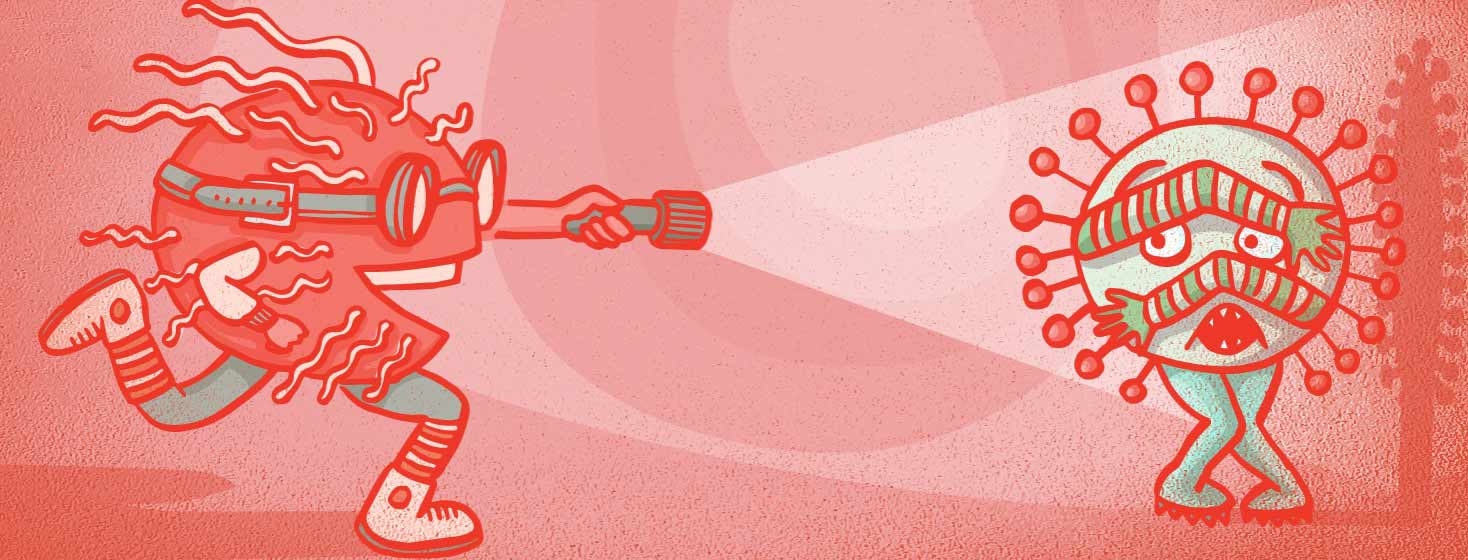Immunotherapy: The Key to Developing an HIV Vaccine?
Recent advances in HIV research suggest the possibility that in the near future, daily antiretroviral therapy (ART) may no longer be needed to control HIV. For years, HIV researchers have been looking to develop a cure or a vaccine for HIV.
Now, using engineered immunotherapy, researchers suggest that immune cells may be able to be corralled to coax latent HIV out of cells and to destroy them. Immunotherapy, according to the National Cancer Institute, is a biological cancer treatment that marshals a person’s immune system to fight disease.
Current HIV treatment
ART has been a successful approach to controlling HIV. ART works by stopping HIV replicating along the HIV life cycle. Because this replication process slows down, the viral load (amount of HIV in the blood) decreases to low levels.4
The consistent and daily use of ART helps in decreasing a person's viral load to virtually undetectable levels in the blood and reduces the risk of transmission.1-4 ART has effectively reduced HIV-related complications and deaths.1,2 However, ART can not completely eliminate the virus from the body.1,2 Even with the use of ART, "HIV conceals itself and continues to reside within resting memory" CD4+ T cells (also known as T helper cells).1
Developing an HIV vaccine
The fact that HIV can reside and incorporate itself into T helper cells during its latent, inactive phase is important to note. It is thought that a key to finding a cure for HIV infection is to develop a method that drives the virus out of T helper cells and then target the virus for elimination.1 Many refer to this approach as "kick and kill": kicking the virus out of hiding so that it can be effectively killed.
Immunotherapy and developing a HIV vaccine
Advances in immunotherapy have developed the ability to reengineer the function of certain immune cells that typically recognize and fight a different kind of virus.2 Yet, the question has been, "Which cells play host to HIV?" This is what researchers at the University of Pittsburgh School of Public Health have been looking for, so they know what immune cells to kick out.2
Using cytomegalovirus in immunotherapy
Investigators there set out to examine cytomegalovirus (CMV), another virus that also has a latent characteristic and infects more than 50 percent of adults, including 95 percent of people with HIV. CMV is known to cause eye infections and other serious illnesses. It is typically controlled by a healthy immune system.1,2,4
Analysis in the lab suggests that, in some people, 1 one out of every 5 T helper cells are specific to the CMV virus.2 Researchers hypothesized that the T helper cells that are specific to fighting CMV may also make up a significant part of the latent HIV reservoir. So, researchers used immunotherapy to target the HIV and to activate CMV-specific T helper cells.2
How was this study on immunotherapy conducted?
Study participants were from the Pitt Men's Study, the Pittsburgh site of the Multicenter AIDS Cohort Study (MACS). They donated substantial amounts of blood to find T cells that were latently infected with functional HIV, specifically in HIV-positive men who used ART to control the virus.2 The large volume of blood was needed because the latent T cells may appear in as few as 1 out of every 10 million cells.2
The use of dendritic cells
Researchers also isolated immune cells called dendritic cells. They are described as the quarterbacks of the immune system because they “hand off the ball and dictate the plays, telling other immune cells where to go and what to fight."2
Dendritic cells are essential in the development of cancer immunotherapies. Although dendritic cells have been used to induce the immune system to kill HIV, they haven’t yet been used to kick latent HIV out of its various hiding places.2 In the most recent study published in EBioMedicine, scientists engineered "antigen-presenting type 1-polarized, monocyte-derived dendritic cells" (MDC1) that were primed in the lab to seek out and activate CMV-specific cells, with the thinking that they also may contain latent HIV.”1-4
Results of the study
MDC1 was successful in the lab to use dendritic cells to incorporate CMV to both kick and kill virally infected cells after coaxing them out of their hiding places.1-4
Researchers at the University of Pittsburgh are hopeful that clinical trials based on those lab results could lead to the development of a vaccine that would keep HIV under control in people who are HIV positive and, eventually, obviate the use of daily medications.2

Join the conversation